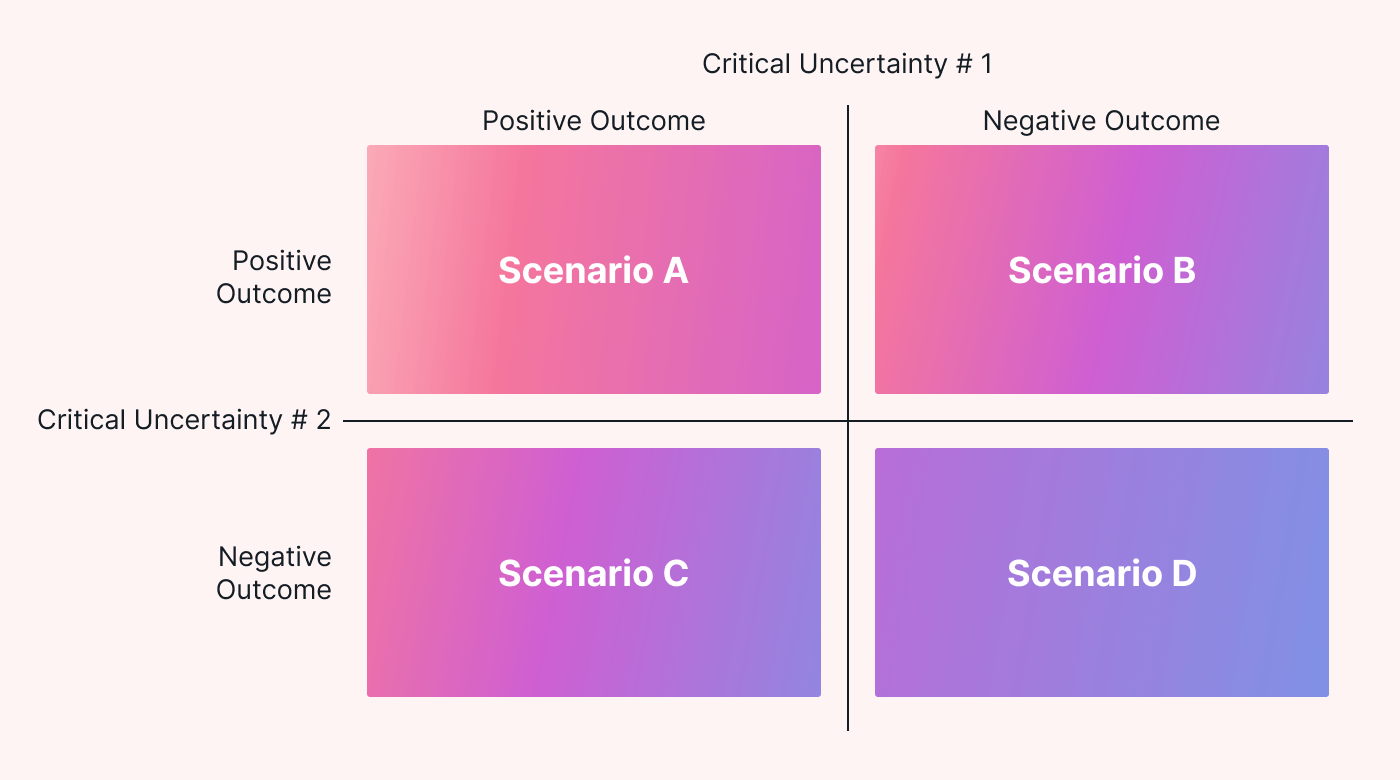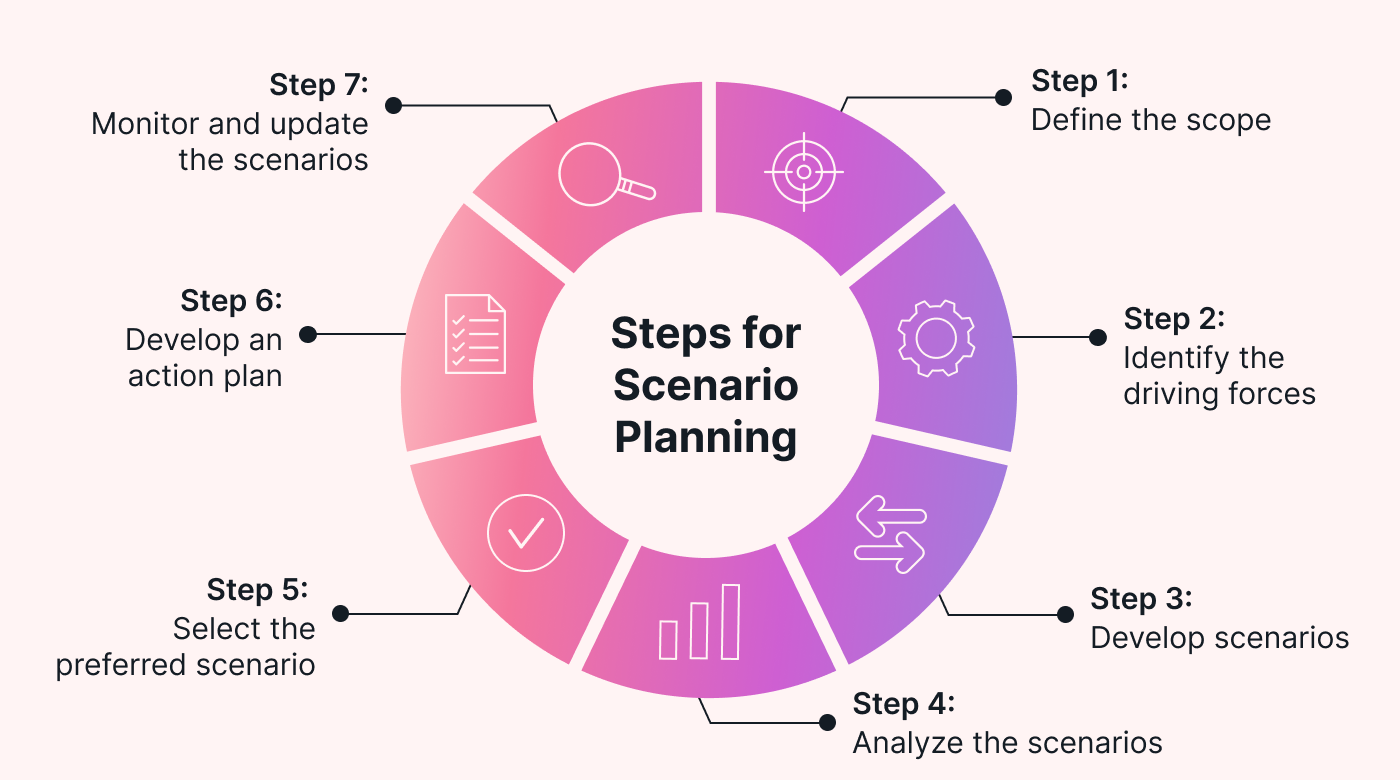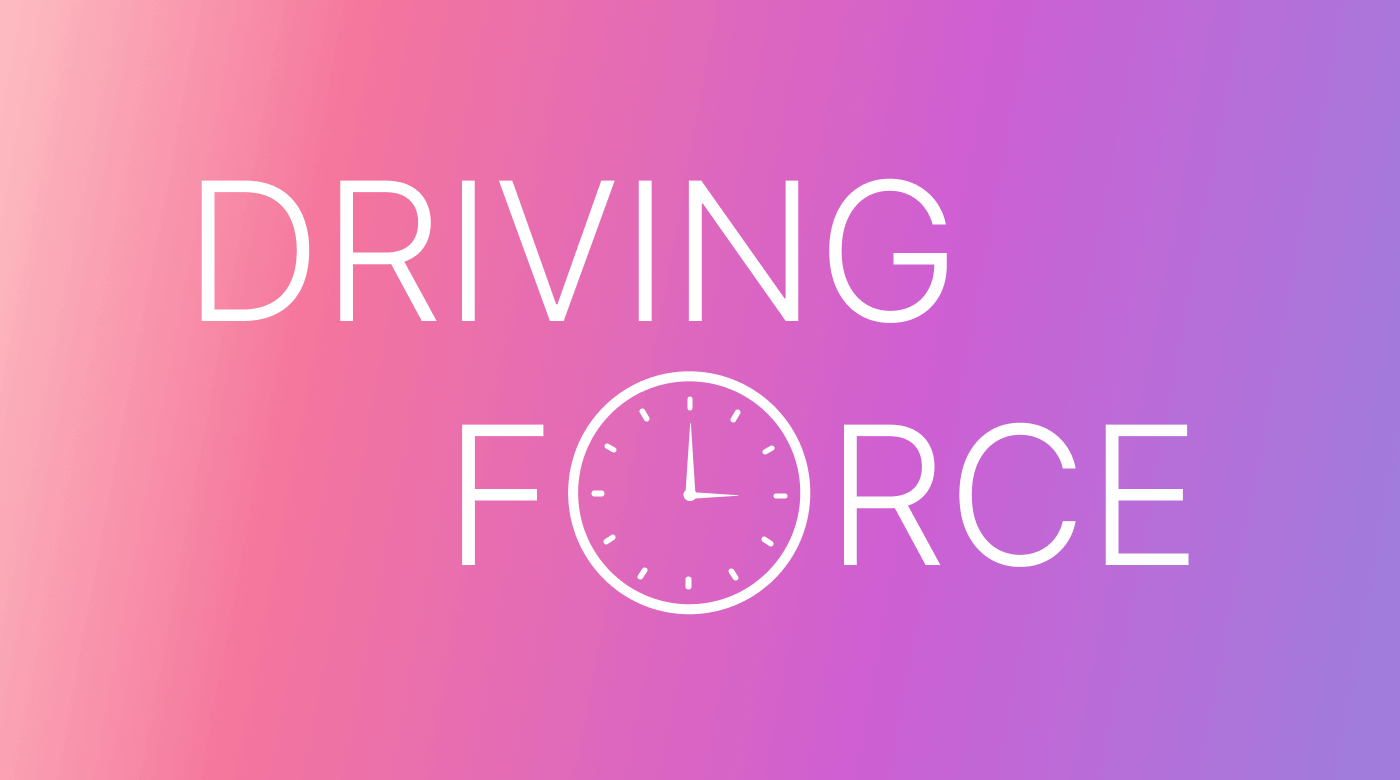Are you tired of feeling like you're flying blind?
Do unexpected roadblocks and curveballs derail your carefully laid plans?
If so, you're not alone.
Business owners across a wide range of industries face a common challenge. This challenge is preparing for the unpredictable and building a strategy.
Enter scenario planning. Scenario planning is a powerful process that can help anticipate future events and develop a resilient strategy.
This article will explore the ins and outs of scenario planning, including what it is, why it matters, and how to implement it. We'll also examine common challenges associated with scenario planning and effective solutions.
Let’s get started.
What is scenario planning?
Scenario planning is a strategic process that helps organizations anticipate and navigate uncertainties. It identifies the key drivers shaping your organization's future and creates plausible scenarios.
You can prepare by evaluating the implications of each scenario on your business. And you can respond to a range of potential challenges and opportunities.
Scenario planning helps you develop adaptable strategies to deal with potential circumstances. By exploring various scenarios, organizations can gain valuable insights into the following:
- Potential risks
- Challenges
- Alternative paths to success
Let's look at a historical example to illustrate the power of scenario planning -- the moon landing.
In the 1960s, NASA faced the immense challenge of putting a man on the moon. Scenario planning played a crucial role in their success. NASA assessed various scenarios, such as gear failures, rescue missions, and political issues. By envisioning and preparing for these scenarios, they planned for risks and optimized their strategies. Ultimately, they achieved their goal of landing astronauts on the moon.
Benefits of scenario planning
Imagine trying the moon landing without considering the risks, uncertainties, and alternative paths. It would have been a recipe for disaster.
In the business world, scenario planning offers huge benefits such as:
- Anticipating and managing risks: by considering various future scenarios.
- Seizing and capitalizing on opportunities: that may arise in different scenarios.
- Enhancing strategic decision-making: through a broader perspective and by considering alternative strategies. (This leads to more informed and robust decision-making, reducing the chances of getting caught off guard.)
- Improving agility and adaptability: enables swift responses to emerging trends or disruptions.
- Aligning stakeholders: by creating a shared understanding of potential future outcomes.
Next, we'll delve deeper into scenario planning in long-term projects and explore how to implement it.
Scenario planning in long-term projects
Uncertainties in long-term projects can have a significant impact on outcomes. For example, a project might face uncertainties about availability of key resources, the cost of components, or lead times for procurement.
The outcomes for each uncertainty can have considerable impact on the project. Scenario planning provides a structured framework for anticipating and preparing for different possibilities. It allows teams to identify potential risks and proactively develop strategies to mitigate them.
 |
Scenario planning opens doors for development within the organization. By considering alternative scenarios, teams can uncover innovative approaches and creative solutions. This approach fosters a culture of continuous improvement and adaptability.
Scenario planning enables teams to seize opportunities that may arise during the project. By considering various scenarios, teams can position themselves well to make informed decisions.
Scenario planning also promotes collaboration and knowledge sharing within the team. It leverages diverse perspectives to drive innovation and growth.
7 steps for effective scenario planning
A well-defined process of seven steps is crucial for effective scenario planning. Let's explore these steps in detail, offering practical insights and examples.
 |
Here is a quick summary of each step before diving into each one below:
- Define the scope: Identify the area of focus and the time horizon for your scenario planning exercise.
- Identify the driving forces: Determine the key factors impacting your strategy or business.
- Develop scenarios: Create plausible narratives that explore different outcomes.
- Analyze the scenarios: Evaluate the potential risks and opportunities associated with each scenario.
- Select the most likely scenarios: Prioritize the scenarios based on probability and impact.
- Develop an action plan: Outline the steps required to achieve desired outcomes in the chosen scenario.
- Monitor and update scenarios: Review and adapt your scenarios.
Step 1: Define the scope
As you begin your scenario planning journey, defining your exercise's scope is essential. Identify the specific area or project you want to focus on, considering your strategic objectives and time horizon. By narrowing down the scope, you can concentrate your efforts and resources.
Consider this scenario:
Sarah, a design agency owner, recognizes the need to stay ahead in an evolving industry. She decides to embark on scenario planning and begins by defining the scope of her efforts.
After careful consideration, she chooses to focus on her agency's new branding project, which has a timeline of six months. This allows Sarah to allocate her resources and ensure a targeted approach.
This step sets the stage for the rest of her scenario-planning journey.
Step 2: Identify the driving forces
As you embark on identifying the driving forces in your scenario planning, consider the following:
- Economic trends
- Technological advancements
- Regulatory changes
- Social factors that are relevant to your business
Understanding these driving forces will enable you to anticipate potential disruptions. They also help to uncover new opportunities for your strategy or project.
 |
Let's continue with the scenario:
In this step, Sarah identifies the driving forces that'll shape her agency's branding project. She examines the various factors that can impact her strategy. Sarah conducts thorough research, engaging with industry experts to uncover prevailing trends.
Understanding these driving forces is essential for anticipating challenges and uncovering opportunities. Sarah realizes that keeping her finger on the pulse of these factors will enable her to navigate changes.
Step 3: Develop scenarios
Now, it's time to develop plausible scenarios that explore different outcomes. To do this, craft narratives that depict potential futures. This will set the stage for deeper analysis and strategic decision-making.
Continuing the scenario:
Sarah and her team dive into the creative process of developing scenarios for their agency's branding project. They envision various potential futures, each with its challenges and opportunities. These scenarios are crafted to be consistent and grounded in reality. At the same time, being diverse enough to capture the full spectrum of potential outcomes.
By developing these scenarios, Sarah and her team gain new perspectives and insights into potential paths. It lays the foundation for the next step of their scenario-planning journey, where they'll analyze each scenario.
Step 4: Analyze the scenarios
With a collection of compelling scenarios, it's time to analyze each one. This allows you to understand the potential risks, opportunities, and challenges, providing valuable insights for strategic decision-making.
Continuing the scenario:
Sarah evaluates the implications, risks, and opportunities presented by each narrative.
With an understanding of the potential risks and prospects, Sarah gains a holistic view of any possible challenges and the advantages they can leverage.
She can make informed judgments and prioritize strategic actions with this knowledge. The analysis guides her decisions, enabling her to take proactive steps to success.
The insights gained from this step will inform subsequent stages of scenario planning. This empowers the team to develop a robust action plan based on their preferred scenario.
Step 5: Select the most likely scenarios
The next crucial step is to select the most likely scenarios to prioritize. This will help you allocate resources and develop a robust action plan.
Take the time to check and rank the scenarios that best align with your objectives and offer the highest potential for success.
 |
Let's continue the agency scenario:
Sarah and her team now face the task of selecting the most likely scenarios. Through collaborative decision-making, they identify the scenarios that hold the greatest promise.
These scenarios become the focal points for their strategic planning efforts. Now, they can allocate resources, optimize strategies, and navigate uncertainties.
Step 6: Develop an action plan
Once you have selected the most likely scenarios, the next critical step is to develop a comprehensive action plan. This plan will outline the steps and strategies required to achieve your desired outcomes for each scenario.
Focus on outlining the specific actions, resources, and timelines required for each scenario. Engage your team in the planning process, ensuring diverse perspectives and expertise.
Continuing the scenario:
Building upon the selected scenarios, Sarah and her team now focus on developing an action plan. They break down each scenario into its core components and identify the key actions to navigate them.
Collaborating with their team, they brainstorm innovative ideas and practical solutions.
Step 7: Monitor and update the scenarios
Scenario planning is a dynamic and ongoing process that requires continuous monitoring. In this final step, you establish a system to evaluate the scenarios. This ensures relevance and effectiveness over time.
In this step, there's a need for agility and flexibility. You need to assess the risks and opportunities associated with each scenario, adjusting your action plans accordingly.
Stay proactive, responsive, and well-prepared for the ever-evolving landscape.
Completing the scenario:
Sarah uses a structured approach to test the agency's branding project's effectiveness. To do this, they review the driving forces, market trends, and external factors that underpin their scenarios.
They encourage team members to share insights, observations, and feedback and create an open work culture. By embracing a culture of adaptability and learning, they stay attuned to changes in the external environment.
Common problems with scenario planning
While scenario planning can be powerful, some common problems can arise.
It's important to be aware of these challenges and address them to maximize the benefits of scenario planning.
Below are some common problems and their solutions:
Difficulty in identifying relevant drivers.
Solution: conduct thorough research, gather diverse inputs, and consult subject-matter experts.
Overconfidence.
Solution: approach scenario planning with an open mind and embrace uncertainty. Overconfidence can lead to biased scenarios and hinder the exploration of alternative futures.
Inability to agree on scenarios.
Solution: facilitate open discussions, encourage constructive dialogue, and seek common ground.
Difficulty translating scenarios into action.
Solution: outline specific steps, responsibilities, and timelines for implementation.
Having the wrong team.
Solution: The right mix of expertise and perspectives is crucial for effective planning.
Project managers also need to incorporate scenario planning into their work.
They must plan for scenarios that include uncertainties, such as:
- Resource availability (or lack thereof)
- Supply chain issues
- Uncertainties about the project schedule
- Budget constraints
- Technological advancements/disruptions
- Regulatory changes and compliance requirements
Scenario planning summed up
Scenario planning is a vital tool in today's fast-paced and uncertain business landscape. When facing evolving circumstances, it allows businesses to be proactive, adaptable, and resilient. Furthermore, it helps them stay agile, dynamic, and responsive.
By embracing scenario planning, you can achieve all this and so much more.
To get started, follow the process outlined above and leverage a task manager like Motion.





